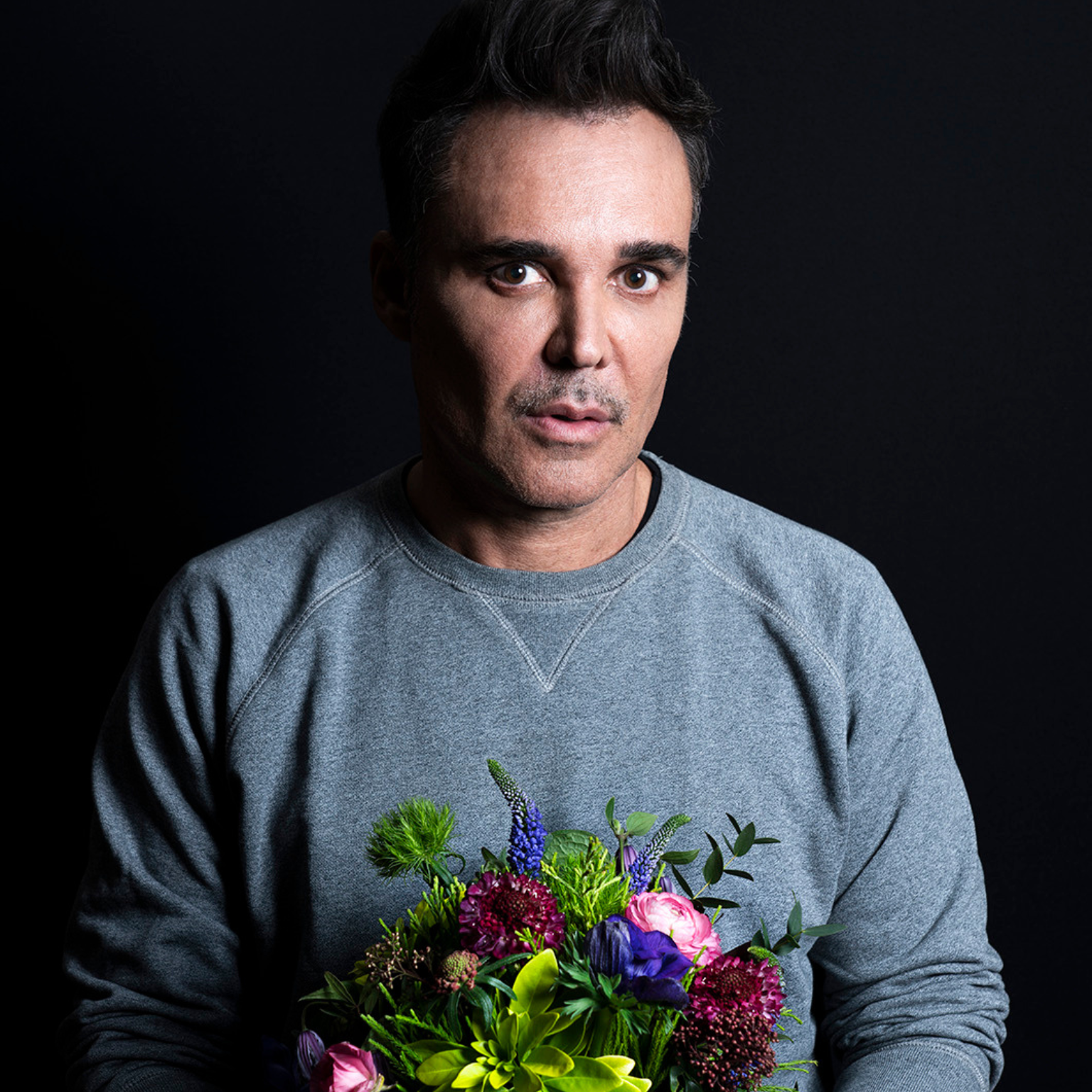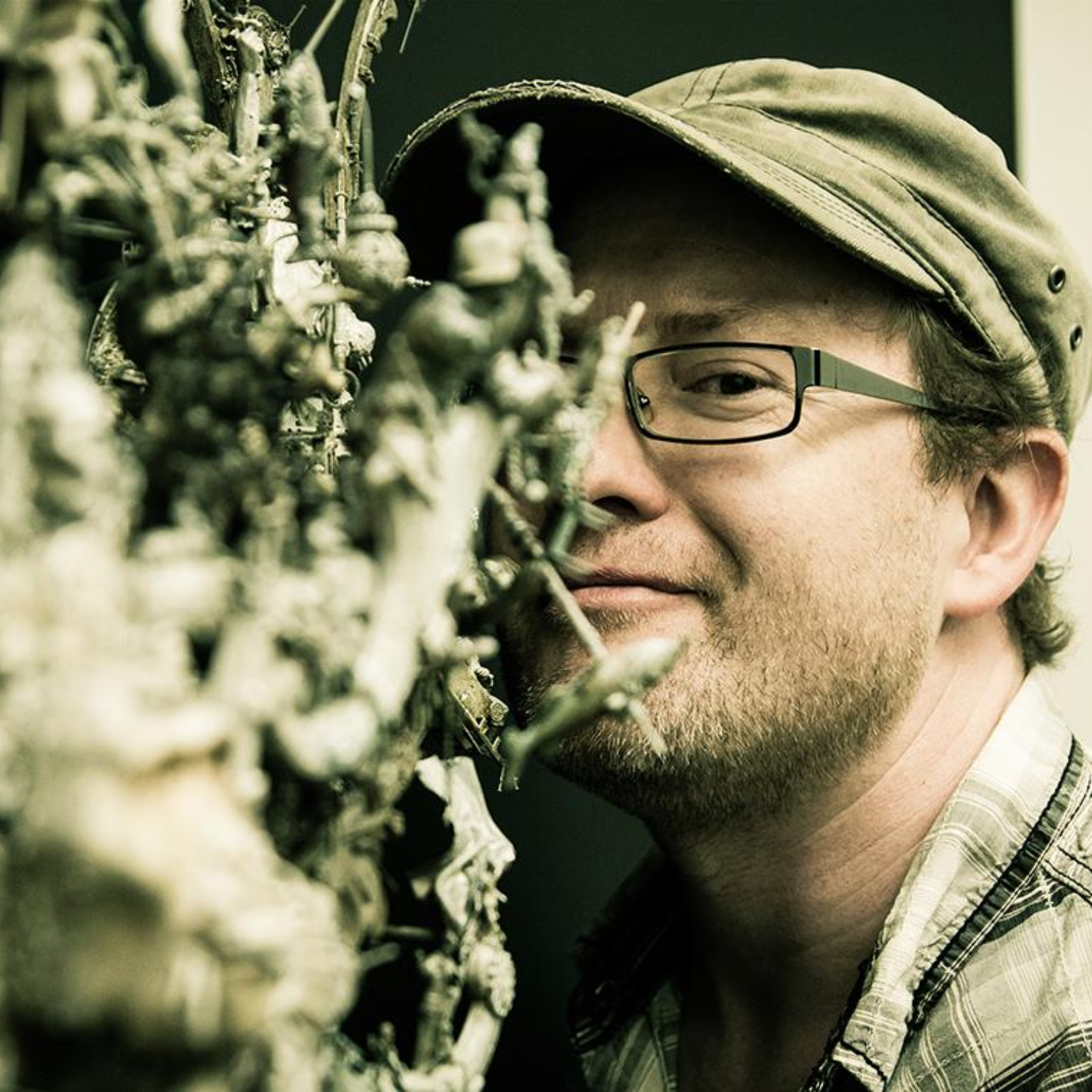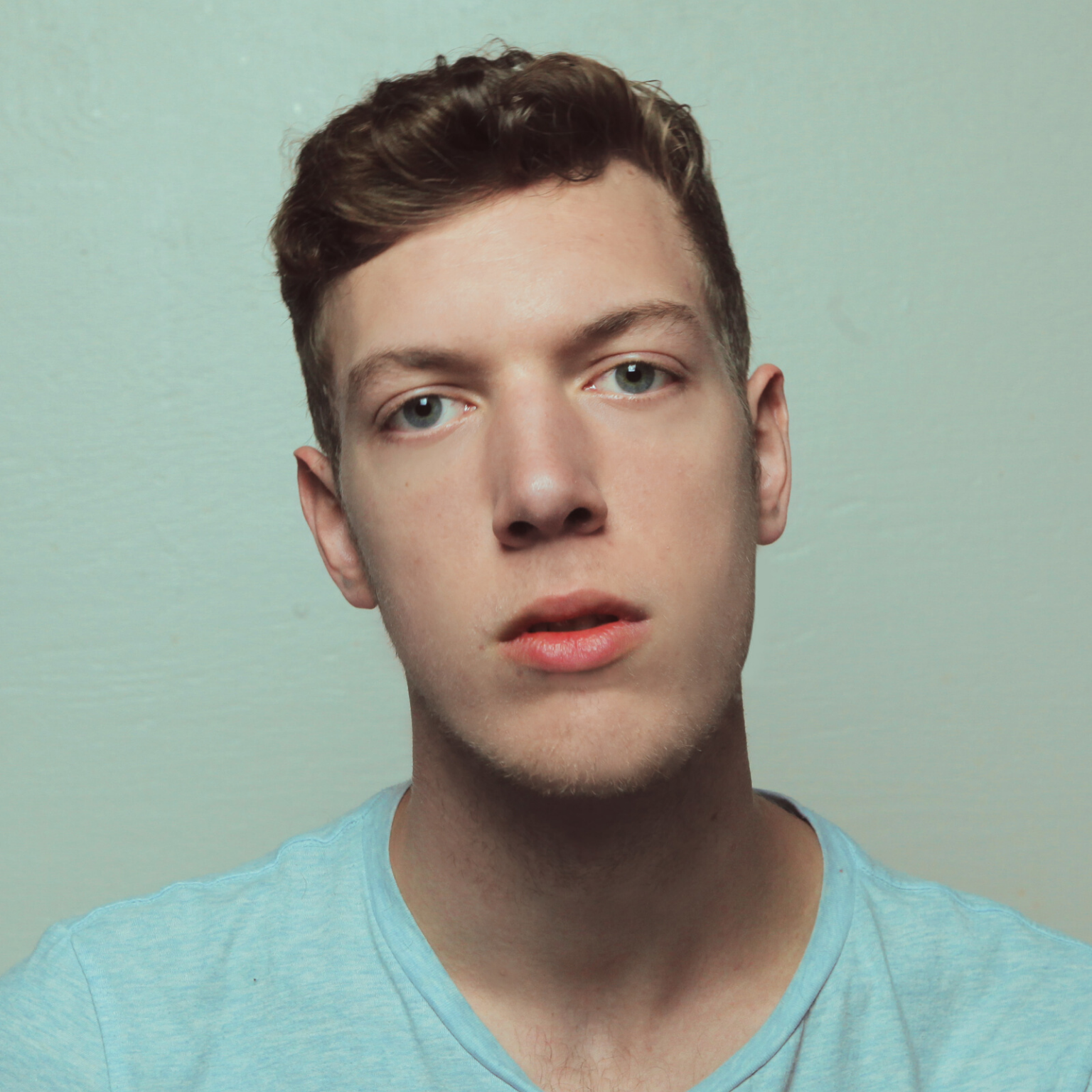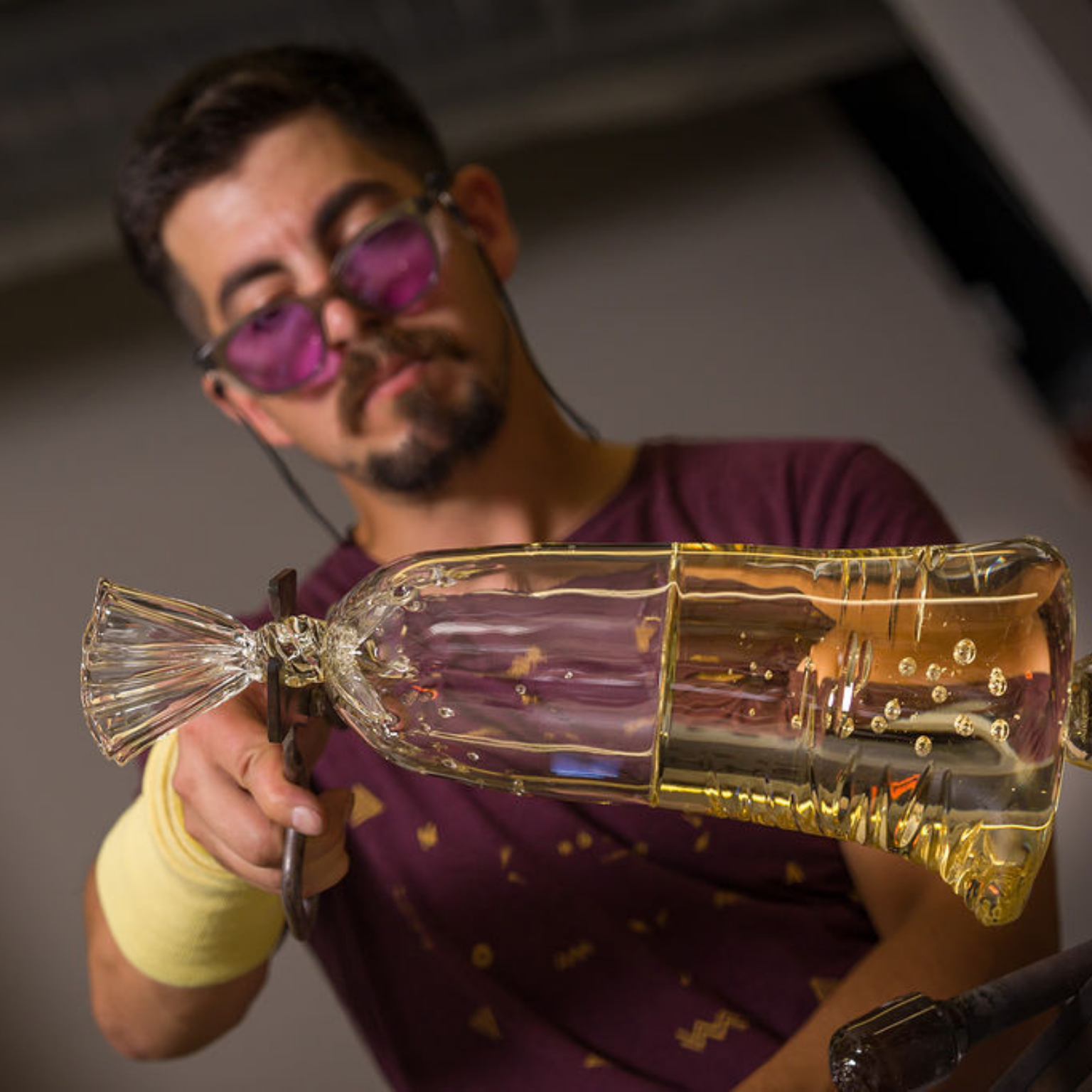David LaChapelle, photographer and director from the United States. Photo © Thomas Canet
An outsider in the art world, he is one of the most iconic and provocative visual artists of our time: David LaChapelle (United States, 1963). Known for his uncanny ability to capture the essence of contemporary culture through his unique lens, LaChapelle has gained international fame for his bold, surreal images that blend photography with conceptual art.
LaChapelle began his career in photography at a very young age, attracting attention for his unique and visionary talent. His education began at the North Carolina School of the Arts, where he devoted himself to the study of the visual arts.
However, his educational path is not followed by a traditional academic education. The artist dropped out early to move to New York City, where he quickly gained recognition in the world of fashion photography.
From his first experience as a fashion photographer in New York to his move away from mass advertising to focus on contemporary art, this interview offers an opportunity to explore the creative mind of David LaChapelle who has collaborated with, among others, Madonna, Elton John, Uma Thurman, George Michael, Lady Gaga, Britney Spears, Whitney Houston, Naomi Campbell, Marilyn Manson, Amy Winehouse, Mariah Carey, Angelina Jolie, Moby, Elizabeth Taylor, Björk, Eminem, Rihanna, Hillary Clinton, David Beckham, Christina Aguilera and Robbie Williams.
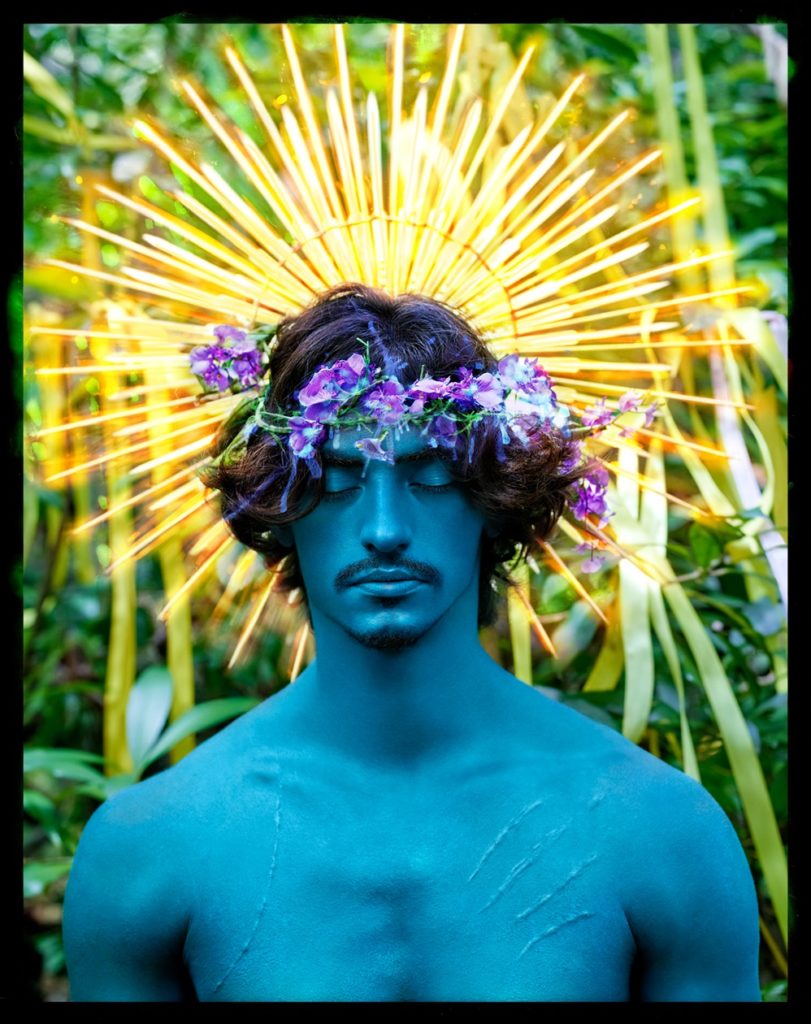
In his artistic production, LaChapelle blends religious iconography, pop culture, classical works, nature, and the environment. Currently on display with the solo show “Happy Together” at VISU Contemporary Gallery in Miami, we will delve into his influences, the recurring themes in his works, his perspective on modern society, and much more.
Through this conversation, we will immerse ourselves in the artistic universe of David LaChapelle, discovering the meaning behind his bold images and videos, and his unique vision of the contemporary world.
You started your career in the 1980s when you also met Andy Warhol. What do you remember about this meeting, about that artistic scene?
I was young and Warhol was my favorite artist. I would see him in nightclubs all the time around New York City but I didn’t talk to him until a few years later when I had a portfolio of photographs from my arts high school.
I was at the Ritz nightclub at a Psychedelic Furs concert. I went up to Andy and asked if I could show him pictures. He invited me to come to his studio the next day. I showed him my work and was eventually hired to work for Interview magazine.
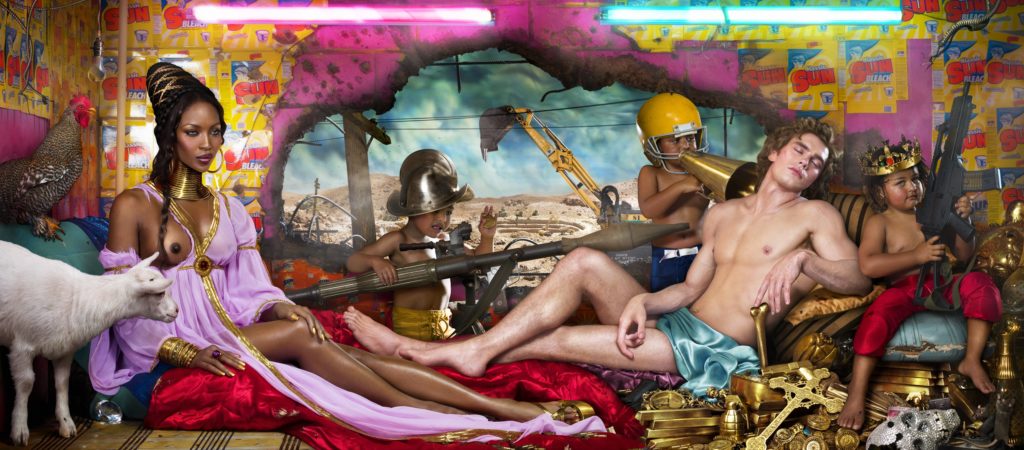
The scene was very lively. The east village felt what I read about Paris in the 1930s – an artistic explosion. Jeff Buckley was performing at Cafe Cine. There’s Keith Haring at the Fun Gallery. Wow, the Fun Gallery – what a great name – everything has gotten so serious since then.
You would leave your house and not know what you would see that day – the artistic scene was flourishing – the east village was dirty, dangerous, and romantic all at the same time. I could feel that it was the artistic epicenter of the world at that moment.
In 2006, after visiting the Sistine Chapel, you decided to create “After the Deluge”, a series of biblical shots in which you reinterpret the increasingly consumerist contemporary society. For the most skeptical, it is thought that the story of Jesus and therefore the Church is the greatest marketing of all time. Do you think that place was, and is, a simple inspiration or a precise provocation?
We live in a fallen world. People run churches and people make mistakes. Big mistakes, great mistakes, and horrific mistakes. They get things twisted and sometimes they get things wrong. But when I read the Bible myself I don’t see marketing, and I don’t feel marketed to.
I find it is a guide to living and especially what I feel most are the accounts of Christ’s life by the apostles and in His own words – the red letters in the Bible. Since I was young – talking about East Village earlier – if I didn’t have my faith in that time, I don’t know how I would have made it in this life. I cannot imagine this life without faith, or if the material was all there was.
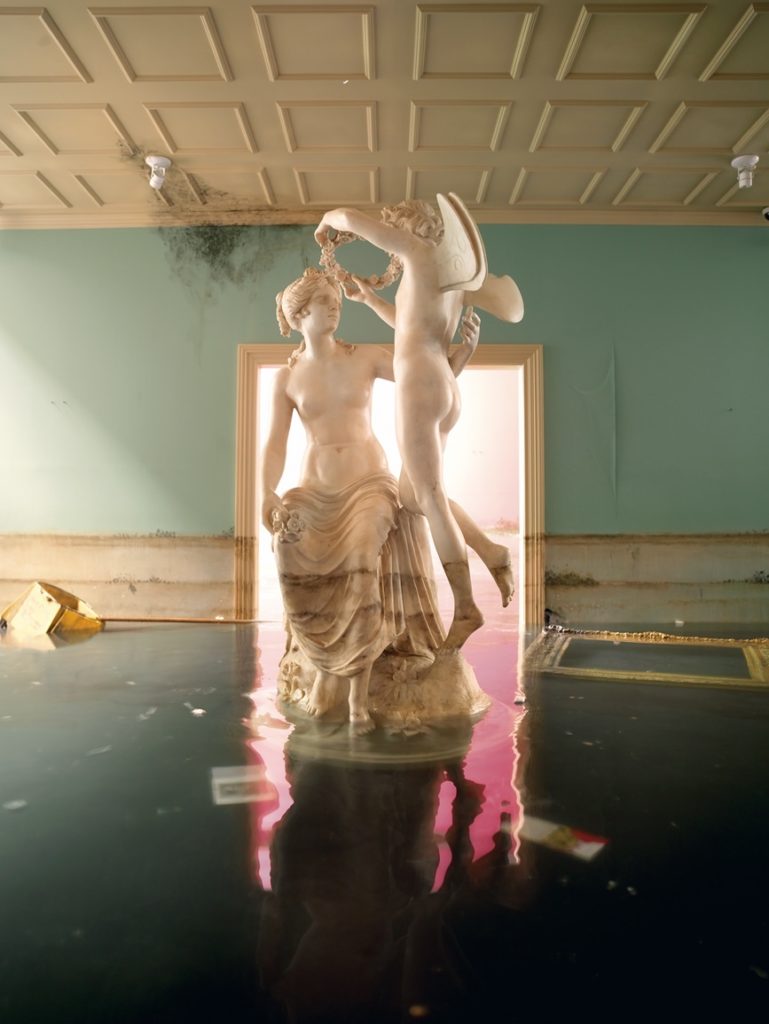
We can choose to turn our back on the darkness and turn to the light. in that light, I find inspiration, the best of myself, and my path. without that light, I am lost. this is a personal experience. it is like being in love with me – because I want to share this. I cannot imagine living without it.
There was a time when I lived in the dark, but we need to have the dark to know the light. At moments in my life, I was so lost I did not know I was lost… When I bring myself back to the light, I do the best thing I can do: walk in the lighted path.
Can you tell us how one of your photos is conceived? Maybe one in particular about which you remember an interesting anecdote.
Conception comes from wanting to share something. When I am not working and creating there is a feeling of necessity to start creating again. At this point in my life, I want my pictures to be purposeful and I want to communicate things directly.
I don’t want them to have to be explained – I want my message and feeling to be clear through the image. It is a means to connect with people. It’s beautiful when you touch someone through music art or a photograph. I have had inspiration come to me in dreams, many times it comes while in forward motion, walking, running, swimming… ideas will pop into my brain.
Sometimes an idea is in my mind and I cannot get it out and I need to manifest that thought into an image – it’s a form of release; oftentimes an idea will come from a higher place, not me. Sometimes even on shoots, I feel there is something bigger at work – bigger than me.
I need to get out of the way and let it unfold. I’ve had so many experiences through the years and the best ones are when I’m really in alignment in a good place in my mind and my life. There is an alignment that happens.
Director and photographer: where do you find inspiration for your productions and how do you choose your models for your projects?
Many times I photograph people who are in my life or around me. People I meet, faces I find interesting. I draw from people in my life, but if I can’t find a person to play the role, we do castings until I find the right person.
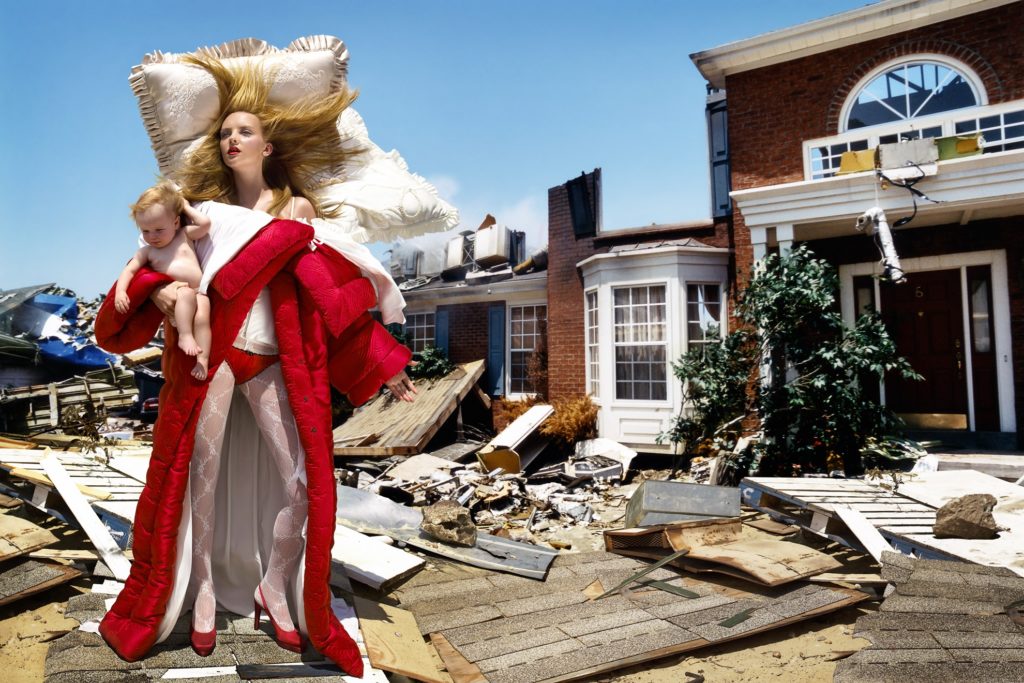
Could you tell us how the “David LaChapelle: Happy Together” exhibition at VISU Contemporary Gallery in Miami was conceived? And based on what criteria did you select the works on display?
The exhibition was curated by Bruce and Blake, the gallery directors. It is a mix of stories that I have told from the 1980s to now. They somehow work together in a happy group, they look happy together.
Among the many collaborations, you created a project with Kenny Gloss and George Michael. What memories do you have of George?
So many artists that I have worked with Amy Winehouse, Whitney Houston, George Michael… so many others – there’s been so much suffering and so much sorrow. So many others that I won’t name that are still with us – I always found it heartbreaking that these people who give the world so much suffer so terribly. The world looks to them like they have it all… they have material wealth, fame, and adoration, but they suffer immensely.
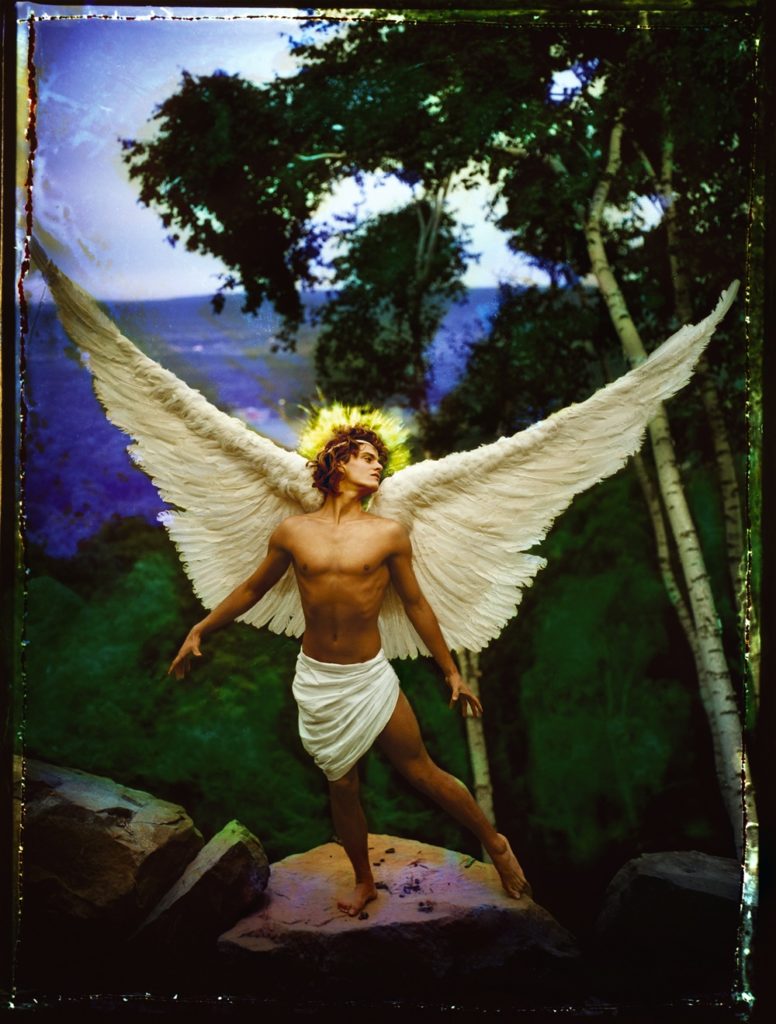
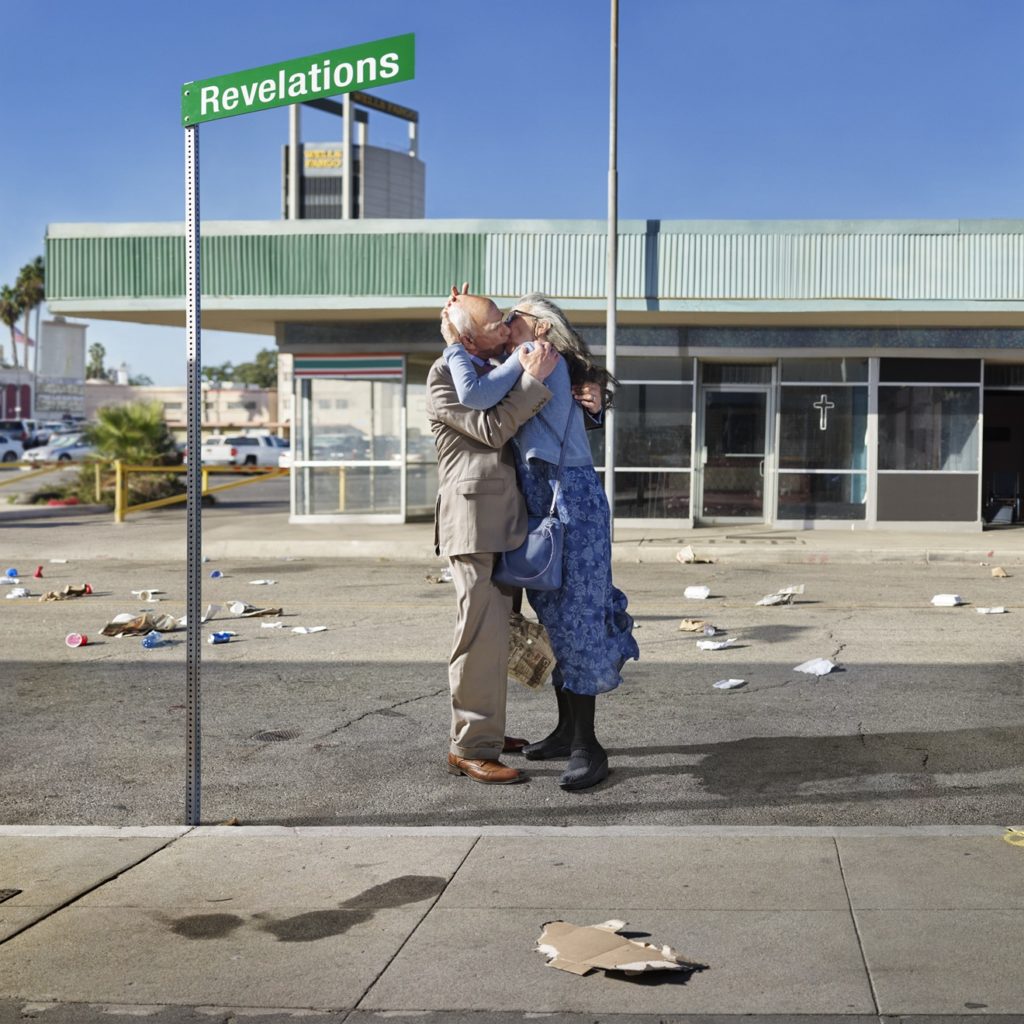
For many years you have chosen to live far from the urban noise. You moved to Hawaii to a farm where everything is powered only by solar and water energy. Why this eco-sustainable choice?
Anyone alive today is using fossil fuels – unless you don’t move. I can’t claim to be an eco-warrior when I am taking a flight. I feel connected to God and nature when I am living off the grid. God created nature – a cathedral of the forest and I feel connected there – always have since I was a little kid. I love the forest.
In your production, one of the themes you address is the relationship between man and nature. In your opinion, how much has this relationship changed today? Why?
I can’t answer for everyone else but for myself, I have to stay closer to nature. I need to be close to nature. I could never take a cruise ship because they don’t have trees. I love to be in parks – if I’m in structures or cities too much I get anxious and I need to be in the vicinity of a tree, a forest, or a park.
Even in Tokyo, I went to a graveyard because it was the only place during the day where I could find trees.
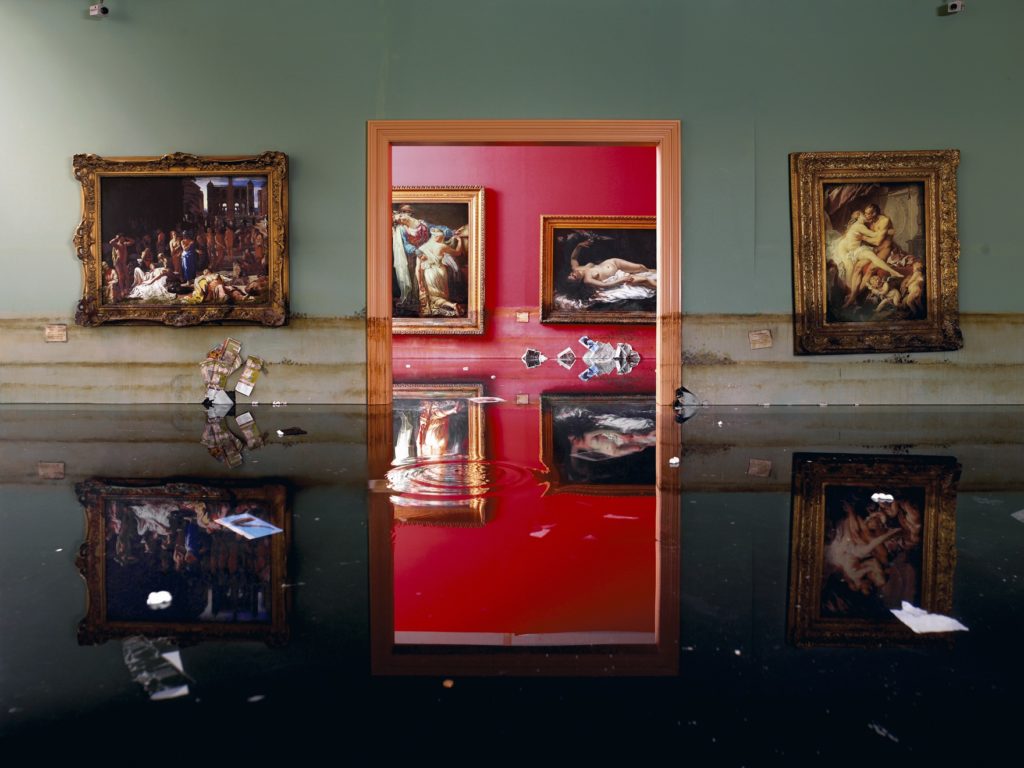
When I am in cities for too long, I feel a disconnection. I feel I am not on the Earth. We as human beings are part of the natural world. We do not just live on the Earth, we are part of it. Being in nature has allowed me to reconnect to the themes and ideas that spoke to me when I was starting.
I have had the great experience of returning to themes of a spiritual nature and answering questions about the journey beyond this life.
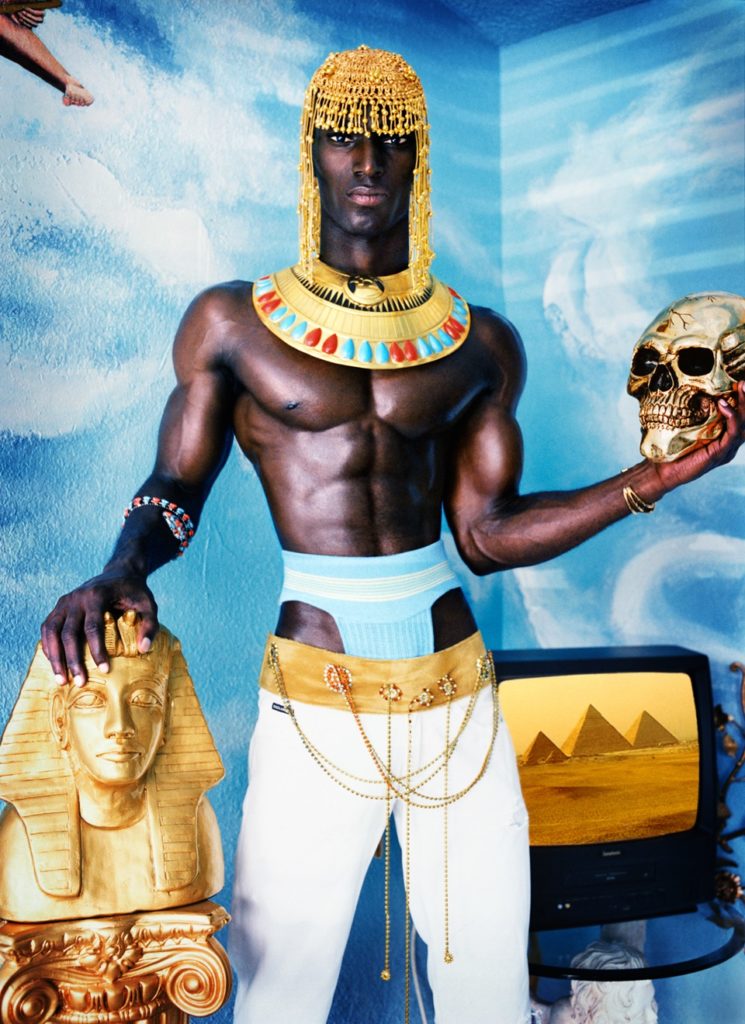
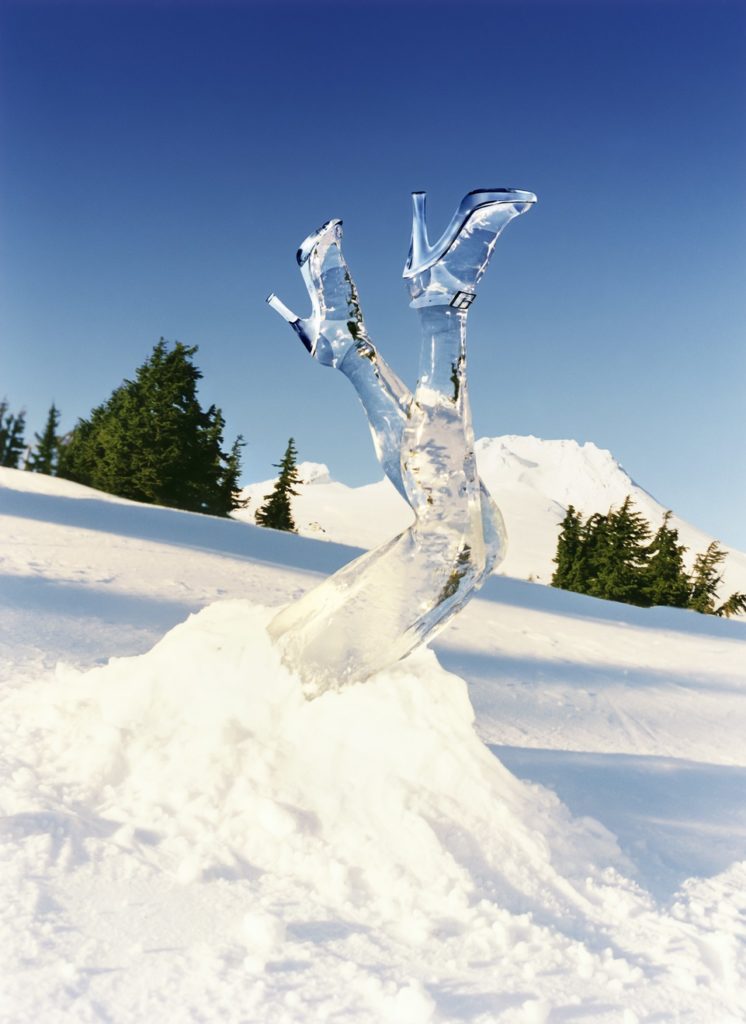
© David LaChapelle. Courtesy of VISU Contemporary
Interview by Fabio Pariante, X / Instagram / Website
